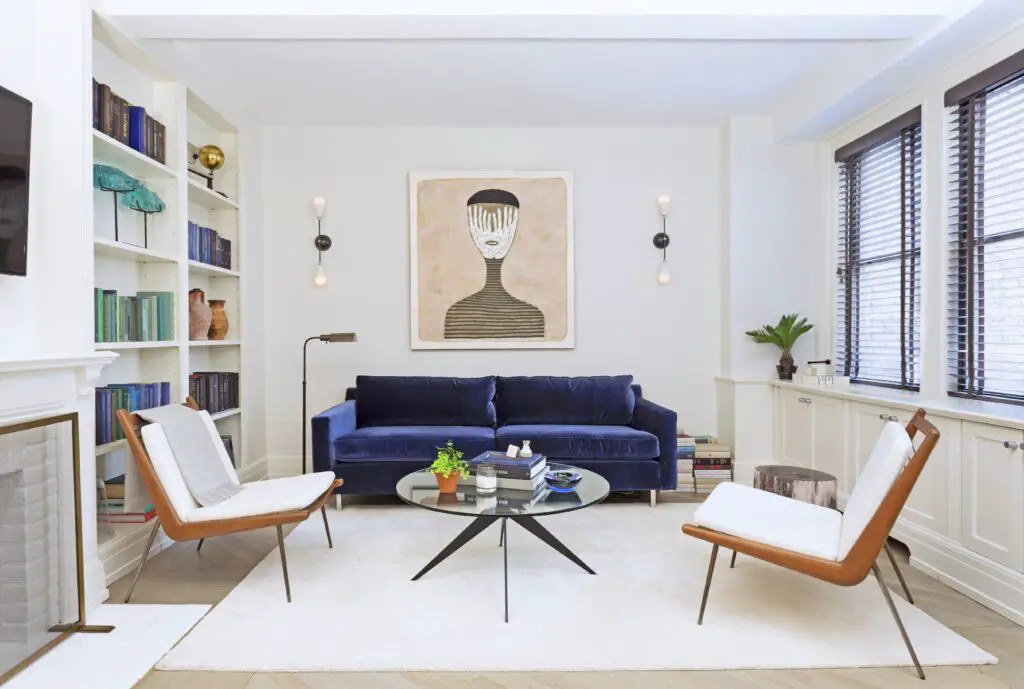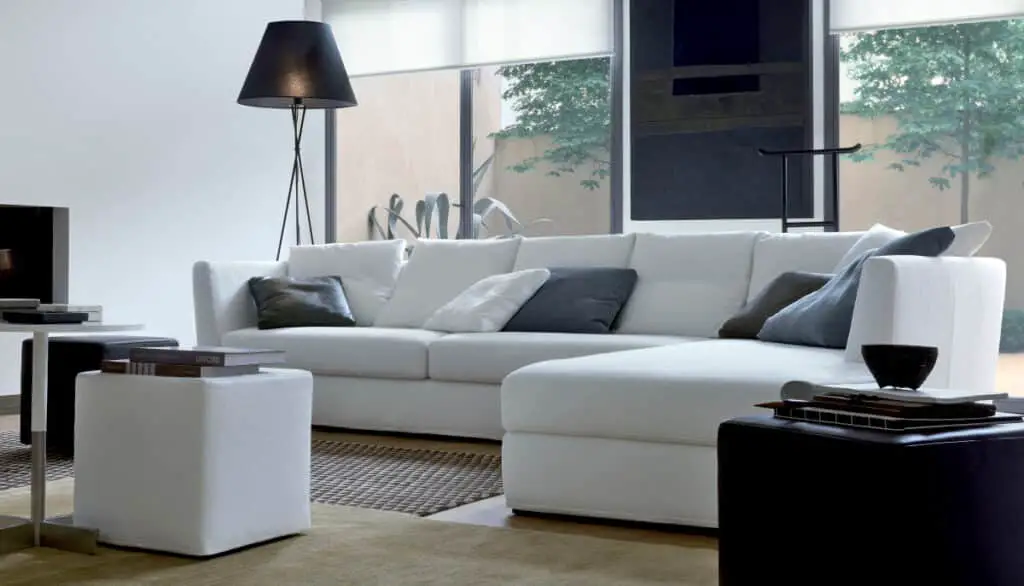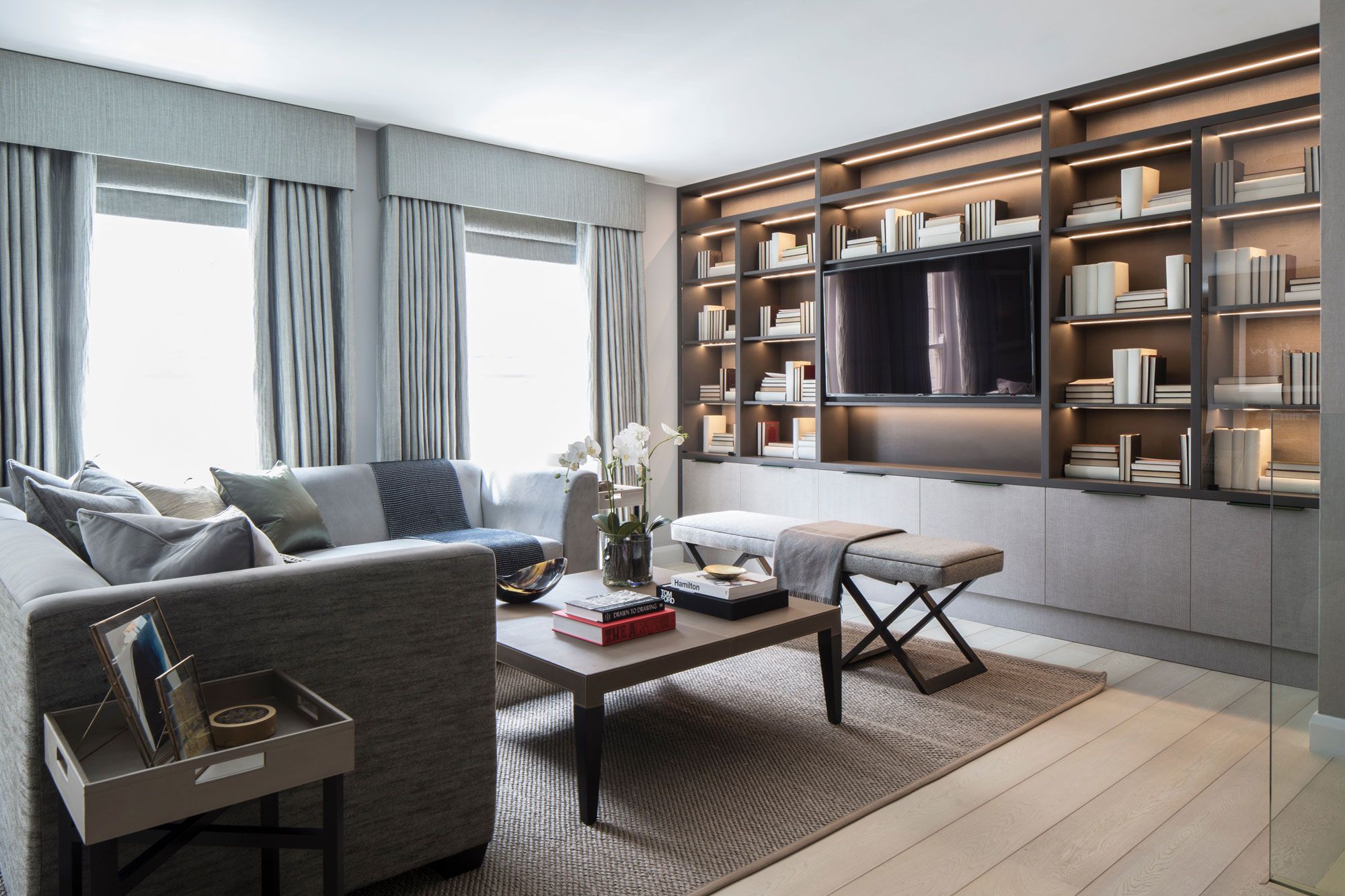What Is An Interior Room
Introduction
What Is An Interior Room: An interior room is a space within a building that is enclosed by walls and is not directly connected to the outside environment. It is typically located within the core of a structure and is designed to provide a comfortable and functional living or working area. Interior rooms serve various purposes, ranging from bedrooms and living rooms in residential buildings to offices and conference rooms in commercial establishments.
Interior rooms play a crucial role in the overall design and functionality of a building. They are carefully planned and designed to meet the specific needs and requirements of the occupants. The layout, size, and arrangement of furniture and fixtures within an interior room are all important considerations that contribute to its functionality and aesthetic appeal. For instance, a bedroom should be designed to promote relaxation and sleep, with a comfortable bed, appropriate lighting, and minimal distractions.
One of the key aspects of an interior single room is its insulation and soundproofing capabilities. This helps create a comfortable and peaceful atmosphere within the room, shielding the occupants from external disturbances and ensuring their privacy. Additionally, interior rooms often have windows or openings that allow natural light to enter, reducing the reliance on artificial lighting and creating a more pleasant and inviting environment.

What is interior work in a house?
Interior design is the art and science of enhancing the interior of a building to achieve a healthier and more aesthetically pleasing environment for the people using the space. An interior designer is someone who plans, researches, coordinates, and manages such enhancement projects.
Interior work in a house refers to the various tasks and processes involved in designing, decorating, and furnishing the inside of a residential property. It encompasses a wide range of activities that aim to create functional and aesthetically pleasing living spaces. From selecting the right color palette and furniture to installing fixtures and finishes, interior work plays a crucial role in transforming a house into a comfortable and visually appealing home.
One of the key aspects of interior work is space planning. This involves analyzing the available space and determining the most efficient and practical layout for each room. It takes into consideration factors such as the size and shape of the room, the placement of doors and windows, and the desired functionality of the space.
Interior design is another important component of interior work.
It involves the selection and arrangement of furniture, accessories, and decorative elements to create a cohesive and visually appealing look. Interior designers consider factors such as the client’s preferences, the architectural style of the house, and the desired mood or atmosphere of each room. They use their expertise in color theory, texture, and proportion to create harmonious and balanced interiors that reflect the client’s personality and lifestyle.
In addition to aesthetics, interior work also focuses on functionality. This includes the installation of fixtures and fittings that enhance the usability and convenience of the space. For example, electrical and plumbing work is essential for ensuring that the house has proper lighting, heating, and water supply. Carpentry work involves the construction of built-in cabinets, shelves, and other storage solutions that maximize space and provide efficient organization.
Overall, interior work in a house encompasses a wide range of tasks and considerations. It involves careful planning, creative design, and skilled execution to create living spaces that are not only visually appealing but also functional and comfortable. Whether it’s a small apartment or a large family home, interior work plays a crucial role in transforming a house into a personalized and inviting sanctuary.
What are the three types of interior?
10 Popular Interior Design Styles Explained
Modern. The modern style stems from the Modernism movement that came about in the 1920s. …
Traditional.
Contemporary.
Industrial.
Transitional.
Rustic.
Bohemian.
Minimalist.
Introduction:
These styles encompass different aesthetics, color schemes, and furniture choices, allowing individuals to express their personal taste and create a space that reflects their personality and lifestyle. Understanding these three types of interior design can help individuals make informed decisions when it comes to decorating their homes or commercial spaces.
Main Body:
1. Traditional Interior Design:
It draws inspiration from various historical periods, such as the Victorian era or the Renaissance period. This style often features rich and warm color palettes, ornate furniture pieces, and intricate details. Traditional interiors exude elegance and sophistication, with a focus on symmetry and balance. Common elements found in traditional interiors include chandeliers, antique furniture, and luxurious fabrics like velvet or silk.
2. Modern Interior Design:
Modern interior design, also known as contemporary design, is all about simplicity, clean lines, and minimalism. This style embraces the concept of “”less is more”” and focuses on functionality and practicality. Modern interiors often feature neutral color palettes, sleek furniture designs, and open floor plans. The use of natural light and the integration of technology are also common in modern interior design. This style creates a sense of spaciousness and promotes a clutter-free environment.
3. Eclectic Interior Design:
Eclectic interior design is a combination of different styles, colors, and patterns. It allows individuals to mix and match various elements to create a unique and personalized space. This style encourages creativity and self-expression, as there are no strict rules to follow. It is a perfect choice for those who enjoy experimenting with different design elements and want to create a visually stimulating environment.
By understanding these three types of interior design, individuals can choose the style that best suits their preferences and create a space that is both functional and aesthetically pleasing. Whether one prefers the timeless elegance of traditional design, the sleek simplicity of modern design, or the creative freedom of eclectic design, each style offers its own unique charm and allows individuals to transform their spaces into personalized havens.
What comes under interiors?
Interior design involves almost all visual elements of a room – flooring, ceiling, walls, furniture, lights, upholstery, doors, windows, electronic items and accessories.
Interiors refer to the internal spaces of a building or structure, including the arrangement and design of its various elements. It encompasses everything from the layout and organization of rooms to the selection of furniture, colors, and materials. The goal of interior design is to create functional and aesthetically pleasing spaces that meet the needs and preferences of the occupants. This field combines creativity, technical knowledge, and problem-solving skills to transform empty spaces into inviting and comfortable environments.
One of the key aspects of interior design is space planning. This involves determining how to best utilize the available space to accommodate the desired functions and activities. It includes considerations such as the placement of walls, doors, and windows, as well as the flow of movement within the space. Effective space planning ensures that the interior is both efficient and visually appealing.
Another important element of interiors is the selection and arrangement of furniture and accessories. Furniture not only serves a functional purpose but also contributes to the overall style and atmosphere of a space. The choice of furniture depends on factors such as the intended use of the space, the desired aesthetic, and the budget. Accessories, such as lighting fixtures, artwork, and decorative items.
Add the finishing touches and enhance the ambiance of the interior.
Color plays a crucial role in interior design as it can greatly influence the mood and atmosphere of a space. Different colors evoke different emotions and can create various effects. For example, warm colors like red and orange can create a cozy and energetic atmosphere, while cool colors like blue and green can promote a sense of calmness and relaxation. The selection of colors should be based on the purpose of the space and the desired emotional response.
Materials and textures also contribute to the overall look and feel of an interior. The choice of materials, such as wood, metal, glass, or fabric, can greatly impact the style and durability of a space. Textures, whether smooth, rough, or patterned, add visual interest and tactile appeal. Combining different materials and textures can create a harmonious and visually appealing interior.
Interiors encompass a wide range of elements and considerations, including space planning, furniture selection, color choices, and materials. It is a multidisciplinary field that requires a balance of creativity, technical knowledge, and attention to detail. By carefully designing and arranging the internal spaces, interior designers can create functional, beautiful, and personalized environments that enhance the quality of life for the occupants.
What is the meaning of interior design room?
noun. the design and coordination of the decorative elements of the interior of a house, apartment, office, or other structural space, including color schemes, fittings, furnishings, and sometimes architectural features.
Interior design room refers to the process of creating a visually appealing and functional space within a building. It involves the selection and arrangement of furniture, color schemes, lighting, and other elements to enhance the overall aesthetic appeal and functionality of a room. Interior design room is not just about making a space look beautiful; it is also about creating a space that meets the needs and preferences of the people who will be using it.
One of the key aspects of interior design room is understanding the purpose of the space. Different rooms serve different functions, and the design should reflect that. For example, a living room should be designed to be comfortable and inviting, while a home office should be designed to be functional and conducive to productivity. By understanding the purpose of the room, interior designers can make informed decisions about the layout, furniture, and other design elements.
Color plays a crucial role in interior design room. It can set the mood and create a specific atmosphere within a space. Warm colors like red and orange can create a cozy and intimate feel, while cool colors like blue and green can create a calming and relaxing environment. The choice of colors should be based on the purpose of the room and the desired mood. Additionally, the use of patterns and textures can add visual interest and depth to a room.
Lighting is another important aspect of interior design room.
It can greatly impact the overall ambiance and functionality of a space. Natural light is highly desirable as it creates a sense of openness and connection to the outdoors. However, artificial lighting is also essential, especially in areas where natural light is limited.
Furniture selection and arrangement are crucial in interior design room. The furniture should not only be aesthetically pleasing but also functional and comfortable. The size and scale of the furniture should be appropriate for the room, and the arrangement should allow for easy movement and flow. Additionally, the selection of materials and finishes should be based on durability and maintenance requirements.
By understanding the key principles of interior design, one can transform a room into a harmonious and inviting space.
What is the 7 elements of interior design?
What are the 7 elements of design? The 7 elements of design consider space, line, form, light, color, texture and pattern. A balance of these elements is vital to every scheme. Interior design is a multi-faceted profession that requires creativity, technical knowledge, and an understanding of human behavior.
One of the key aspects of interior design is the consideration of the seven elements that contribute to a well-designed space. These elements are crucial in creating a cohesive and visually appealing interior. The first element is space, which refers to the physical area that is being designed. It includes the dimensions, shape, and layout of the space, as well as the flow and circulation within it.
The second element is line, which can be used to create a sense of movement and direction within a space. Lines can be horizontal, vertical, or diagonal, and they can be straight or curved. The use of different types of lines can help to define and separate different areas within a space.
Form is another important element of interior design
It refers to the shape and structure of objects within a space. Forms can be geometric or organic, and they can be three-dimensional or two-dimensional. The use of different forms can add visual interest and create a sense of balance and harmony in a space.
Texture is the fourth element of interior design. It refers to the surface quality of materials used in a space. Texture can be rough or smooth, shiny or matte, and it can be visual or tactile. The use of different textures can add depth and richness to a space, and it can also affect the way light is reflected and absorbed.
Color is perhaps the most obvious and influential element of interior design. It can create a mood, evoke emotions, and visually enhance or diminish the size of a space. The use of different colors and color combinations can have a significant impact on the overall feel and atmosphere of a room.
A room on the inside of a building is called an interior room because it is protected from the elements by walls. It is usually housed in a building, where it is protected from things like weather, noise, and pollution. On the other hand, an exterior room is one that has a door or window that opens immediately onto the outside.
Interior rooms are controlled, secluded spaces. They are present in households, workplaces, and schools and have diverse roles.. The defining characteristic of an interior room is its isolation from the outside world, creating a distinct and enclosed space within a larger structure.
How does an interior room differ from an exterior room?
A room on the inside of a building is called an interior room because it is protected from the elements by walls. It is usually housed in a building, where it is protected from things like weather, noise, and pollution. On the other hand, an exterior room is one that has a door or window that opens immediately onto the outside.
One of the key differences between an interior and exterior room is the level of privacy and security they offer. Interior rooms are generally more private and secure as they are enclosed within the building’s structure, providing a barrier against unauthorized access. On the other hand, exterior rooms may have limited privacy and security measures, making them more susceptible to external disturbances.
Additionally, the design and construction of interior rooms often prioritize comfort and functionality. In contrast, exterior rooms may have to contend with fluctuating temperatures, noise pollution, and other environmental factors that can impact their usability.
What are some common features or characteristics of an interior room?
Walled interior rooms are used for living, working, and entertainment. Interior spaces have some common aspects that enhance their functionality and beauty.
One important feature of an interior room is its size and layout.
The size of a room can vary greatly, ranging from small and cozy to large and spacious. The layout of the room determines how the space is organized and how different elements such as furniture, windows, and doors are positioned. A well-designed layout can optimize the flow of movement within the room and ensure efficient use of space.
Another characteristic of interior rooms is the presence of walls and partitions.
Walls provide privacy and separation between different areas of a building, creating distinct rooms. They also serve as a canvas for various design elements such as paint, wallpaper, or artwork, which contribute to the overall ambiance and style of the room.
Lighting is another important feature of interior rooms.
Windows or skylights can provide a bright, airy atmosphere, while ceiling lights, lamps, and spotlights can improve vision and set distinct moods.
Flooring and ceiling materials also play a significant role in the characteristics of an interior room.
The choice of flooring, whether it’s hardwood, carpet, tile, or laminate, can impact the room’s acoustics, comfort, and overall aesthetic appeal. Interior rooms share common features and characteristics that define their functionality and aesthetics. These include room size, layout, walls, dividers, lighting, flooring, and ceiling materials. One may design functional, attractive, and comfortable interiors by carefully considering these components.
Can you provide examples of different types of interior rooms?
There are numerous types of interior rooms, each serving a specific purpose and catering to different needs. One common type is the living room, which is typically the central gathering space in a home. Another example is the bedroom, a private space dedicated to rest and sleep. Bedrooms usually include a bed, storage for clothing, and sometimes a desk or vanity.
They typically contain appliances such as a stove, refrigerator, and sink, as well as ample counter space and storage for utensils and cookware. Bathrooms are also important interior rooms, providing facilities for personal hygiene. They typically include a toilet, sink, and shower or bathtub.
Other types of interior rooms include home offices, which provide a dedicated workspace for tasks such as studying or working from home. These rooms often feature a desk, chair, and storage for documents and supplies. Finally, recreational rooms such as game rooms or home theaters offer spaces for leisure activities and entertainment.
How does the design or layout of an interior room impact its functionality and purpose?
The design and layout of an interior room play a crucial role in determining its functionality and purpose. The design elements, such as the placement of furniture, lighting, color scheme, and spatial arrangement, all contribute to the functionality and purpose of the room.
Firstly, the design of an interior room can impact its functionality by optimizing the use of space. For example, a well-designed kitchen will have a layout that allows for efficient movement and workflow, with essential appliances and work areas easily accessible. Similarly, a well-designed office space will have a layout that promotes productivity and organization, with designated areas for different tasks and ample storage solutions.
Secondly, the design of an interior room can also influence its purpose. The choice of furniture, decor, and overall aesthetic can create a specific atmosphere or ambiance that aligns with the intended purpose of the room.

Conclusion
Interior rooms are walled-off spaces inside a building. It is usually in the center of a building and has no windows or fresh air. Residential, commercial, and institutional buildings have interior rooms for bedrooms, offices, storage, and utilities.
One of the key characteristics of an interior room is its isolation from the external surroundings. Similarly, offices and study rooms are often located in interior spaces to minimize distractions and enhance productivity.
Another important aspect of interior space is their versatility in terms of design and functionality. Interior spaces are more flexible in terms of layout and function because they are not reliant on elements like natural light and scenery. They allow architects and interior designers to experiment with different layouts and make better use of the space they have. Interior spaces can be designed with a wide range of options, from simple to extravagant color schemes.




